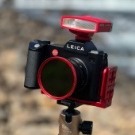Best way to have large prints made from 35mm film
-
Recently Browsing 0 members
- No registered users viewing this page.
-
Similar Content
-
- 3 replies
- 181 views
-
- 17 replies
- 7,655 views
-
- 5 replies
- 371 views
-
- 60 replies
- 2,820 views
-
- 6 replies
- 425 views
-



Recommended Posts
Join the conversation
You can post now and register later. If you have an account, sign in now to post with your account.
Note: Your post will require moderator approval before it will be visible.